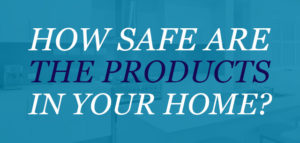You can hold product manufacturers that place defective products into the stream of commerce responsible for the harm and injuries that result from their dangerous goods. This fault can also flow down the distribution and supply chain, from the manufacturer to the distributor to the specific retailer that sold the product.
Fortunately, when you work with an experienced product liability lawyer, you will not have to take on this challenging legal fight alone. Instead, you can focus on your healing while your attorney takes on your case and pursues the justice and damages you deserve.
What Is a Product Liability Claim?
Product liability refers to regulations that give consumers harmed by a defective consumer item the ability to pursue a legal suit.
Under these laws, a product must meet customers’ ordinary expectations. The good does not meet these expectations when an unexpected defect or danger occurs. Consequently, individuals harmed because of these defects could hold those responsible accountable for the damages and pursue compensation for their harm and losses.
Some common products that are known to result in injuries to consumers because of defects include:
- Medical devices
- Pharmaceutical drugs
- Motor vehicles
- Household appliances
- Food
- Electrical devices
- Tools
Three Different Types of Product Liability Claims
To proceed with a legal claim following a product liability accident, victims must show that they were harmed by the product while using it as intended. And while there is a range of defective product cases, these claims generally fall into three categories of product liability: defective design, defective manufacturing, and a failure to provide adequate instructions or warnings concerning the proper use of the product.
Defective Designs
A design defect occurs when a product is inadequately tested or designed, and as a result, it becomes unsafe for individuals to use. Design defects usually impact the entire product line rather than just one specific product.
The most common examples of a design defect include:
- Power tools that have a poorly designed safety guard that does not protect against injuries
- Products that are not structurally stable, such as tables that collapse
- Products that do not properly contain dangerous substances
- Products that are exceedingly dangerous for children, including toys with choking hazards
- Mechanical defects in the design of motor vehicles
Defective Manufacturing
A manufacturing defect refers to an issue or error in the production or construction of the product, causing it to work incorrectly. These defects usually impact only a few product units instead of the whole line.
Some of the more common examples of manufacturing defects include:
- A contaminated batch of medication
- Improperly attached parts
- Using inferior quality materials when building a product
- Improperly installing electric components
- Installing the wrong pieces of a product
Most product liability claims will fall under this category.
Defective Marketing
A product manufacturer must warn consumers of the dangers of using the product, including those that are not obvious. As a result, a marketing defect generally occurs when a product has inadequate warnings or instructions regarding its proper use.
Common examples of defective marketing include:
- A failure to warn individuals of the risks involved with using the product
- Advertisements that encourage improper use of a product
- False claims
- Improper user instructions or warning labels
How to Bring a Defective Product Liability Claim?

If an individual uses a product as directed and suffers injuries because of a defect, the individual may pursue legal action against those responsible for creating the good. Typically, there are three legal theories that an individual can use to bring a product liability claim:
A Negligence Claim
Under a negligence claim, the manufacturer or someone else within the supply chain did not act with reasonable care to produce and design a product with the consumer’s safety in mind.
To prove negligence, following this type of accident, you must establish:
- The defendant owed ta duty of reasonable care to the injured party, such as ensuring that a product was safe to sell.
- The defendant breached this duty of care.
- The injured individual suffered severe injuries and monetary losses because of the breach.
Usually, the higher the risk of injury associated with the product, the greater the duty of care will be on the manufacturer.
A Strict Liability Claim
Under the theory of strict liability, manufacturers and others in the distribution chain can be liable for all injuries and damages caused by an unreasonably dangerous defective product, regardless of the manufacturer’s efforts to keep the product safe.
The victim must show that the product was defective, the defect existed when the product left the facility, and the defect caused the victim’s injuries and damages.
A Breach of Warranty Claim
Manufacturers usually provide express or impliedassurances regarding the adequacy of their products.
Consequently, a breach of warranty claims refers to violating these assurances.
- Implied Warranty: This warranty arises even if there are no written promises regarding the product. Rather, the warranty refers to a guarantee by the manufacturer that if the consumer uses it as intended, wi will not harm them.
- Express Warranty: An express warranty usually arises from materials, manuals, and even pamphlets affixed to the product or provided to you in advertising, marketing documents, or sales pitches. If the manufacturer does not keep the promises with regards to the performance or adequacy of the product, then they breach the warranty.
If you suffered harm from one of these breaches, you can pursue a legal claim for the damages and injuries you sustained.
The Injuries That Can Result From Defective Products
Unfortunately, a defective product accident can cause a catastrophic injury.
While the severity of these injuries depends on the circumstances, the more common injuries that result from these accidents include:
- Traumatic brain injuries
- Spinal cord injuries
- Broken bones
- Internal bleeding
- Internal organ damage
- Facial injuries
- Neck and back injuries
- Burn injuries
- Amputations
- Wrongful death
Worse yet, many of these injuries can result in lifelong treatments that lead to astronomical medical bills, causing substantial financial hardships for you and your family. If you suffered harm following a defective product liability accident, contact an experienced product liability attorney as soon as possible. These lawyers can fight for the compensation you need to get the medical treatment required.
Need a Personal Injury Lawyer?
If are you seeking results in your claims reach out to us at the Levin Firm. Our professional lawyers will walk you through the claims process and how we can benefit your case.
Holding Parties Responsible Following a Product Liability Accident
Depending on the circumstances of the defective product accident, you can hold numerous parties responsible for this incident, including:
- Manufacturers
- Suppliers
- Designers
- Contractors
- Wholesalers
- Distributors
- Engineers, and
- Others in the distribution chain
Yet, figuring out which parties are liable for your injuries following a defective product accident depends on what happened and the products involved. Following these accidents, reach out to an experienced product liability attorney immediately. Your attorney can help you figure out what happened and who caused your accident and make sure to hold all those responsible accountable for the damages you suffered.
Compensation in a Defective Product Liability Claim
If you suffered harm due to a defective product, you might be entitled to compensation for the harm and losses you endured. This compensation breaks down into the following types of damages:
Economic Damages
These damages refer to payment for the actual costs that result from an accident.
They include:
- Past and current medical expenses related to hospital stays, prescription medications, doctor visits, surgeries, and other medical treatments
- Ongoing medical care
- Lost wages and reduced earning capacity
- Domestic replacement services
- Rehabilitative therapy
- Other out-of-pocket expenses
Non-Economic Damages
On the other hand, non-economic damages refer to payment for the subjective losses that result from an accident.
They include losses related to:
- Pain
- Suffering
- Mental anguish
- Physical disfigurement
- Disabilities
- Loss of enjoyment and quality of life
- Loss of consortium
- Humiliation
- Inconvenience from the injuries
Because these damages include easily measurable and hard-to-quantify losses, reach out to a skilled product liability attorney immediately. These legal professionals can help you determine what damages you can pursue and help you fight for maximum compensation.
The Time You Have to Pursue a Defective Product Liability Claim
If you consider filing a product liability claim, note that the time to file a lawsuit is limited. According to the statute of limitations, which is a regulation that dictates how long you have to file a claim following an alleged offense, you may only have a few years to pursue legal action following your accident. If you do not file your case within that allotted time, the law bars you from seeking compensation for the harm and losses you suffered.
Depending on the state's laws, exceptions may change this filing period. As a result, don't wait too long to reach out to an experienced product liability attorney. These lawyers can not only figure out how much time you have to file your legal claim, but they can also ensure they prepare and submit the appropriate documents, files, and motions to the proper court before time expires.
Just because you may have years to file your case, it is not always wise to wait to commence your claim. Over time, memories of the incident can fade, witnesses may no longer be able to testify, and evidence may disappear, factors that can impact your ability to secure the compensation you need.
How Can an Experienced Product Liability Attorney Help You With Your Defective Product Liability Claim?
If you sustained serious injuries or lost a loved one because of a defective product, you may recover financial compensation. To ensure you secure the full extent of this compensation, work with an experienced and skilled product liability attorney.
Once retained, these legal professionals can:
- Go over the details of your product liability accident, figure out if you have a legal claim, and determine what legal options you can pursue.
- Discuss your questions and help you understand the legal process.
- Thoroughly analyze and investigate the incident in question and secure the evidence needed to show what happened and who was at fault.
- Hire experts, including engineers, accident reconstructionists, and health care specialists, to help validate your legal claim.
- Handle the negotiations with the other side and go after the fair settlement you deserve.
- Proceed to trial if the other side does not want to work with you or give you appropriate compensation, and fight for the successful resolution of your case.
If a defective product caused you to suffer significant injuries or losses, do not wait to get the legal assistance you need. Instead, contact an experienced personal injury lawyer today for a free case evaluation. Find out how a lawyer can help you fight for your rights.
